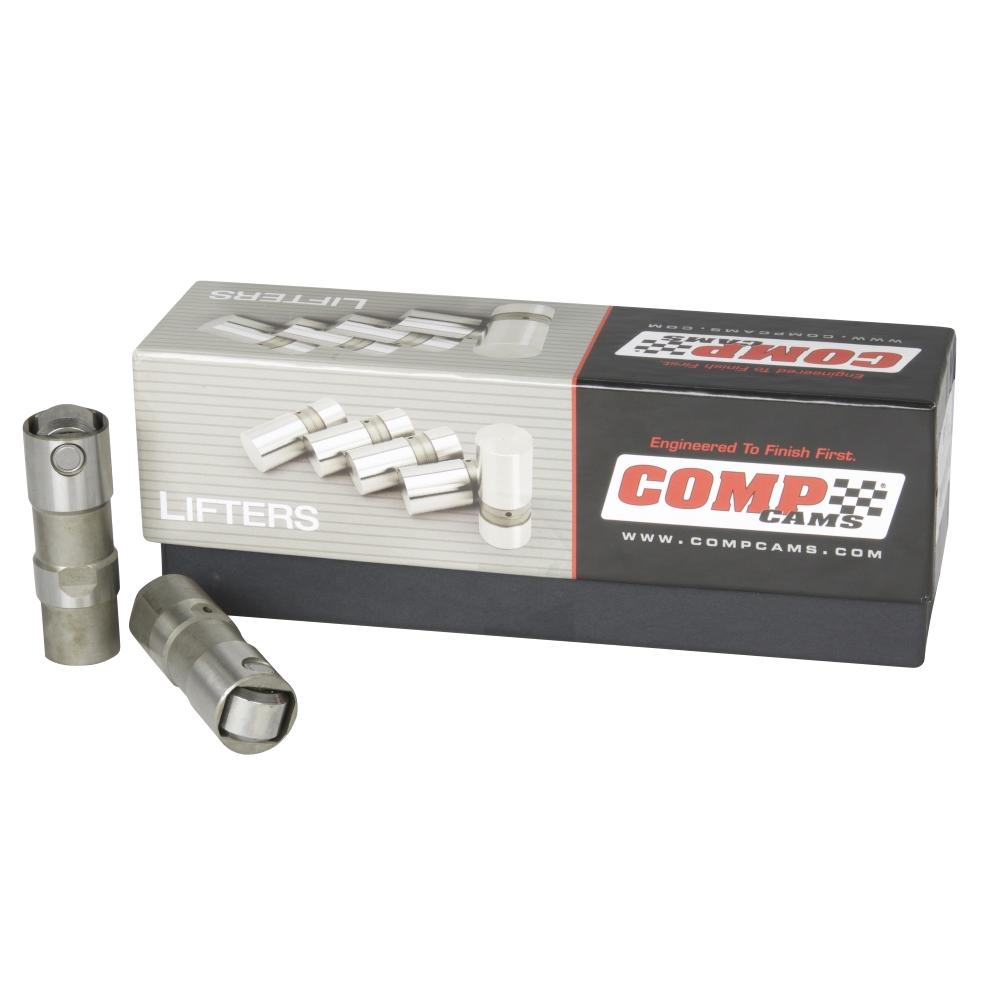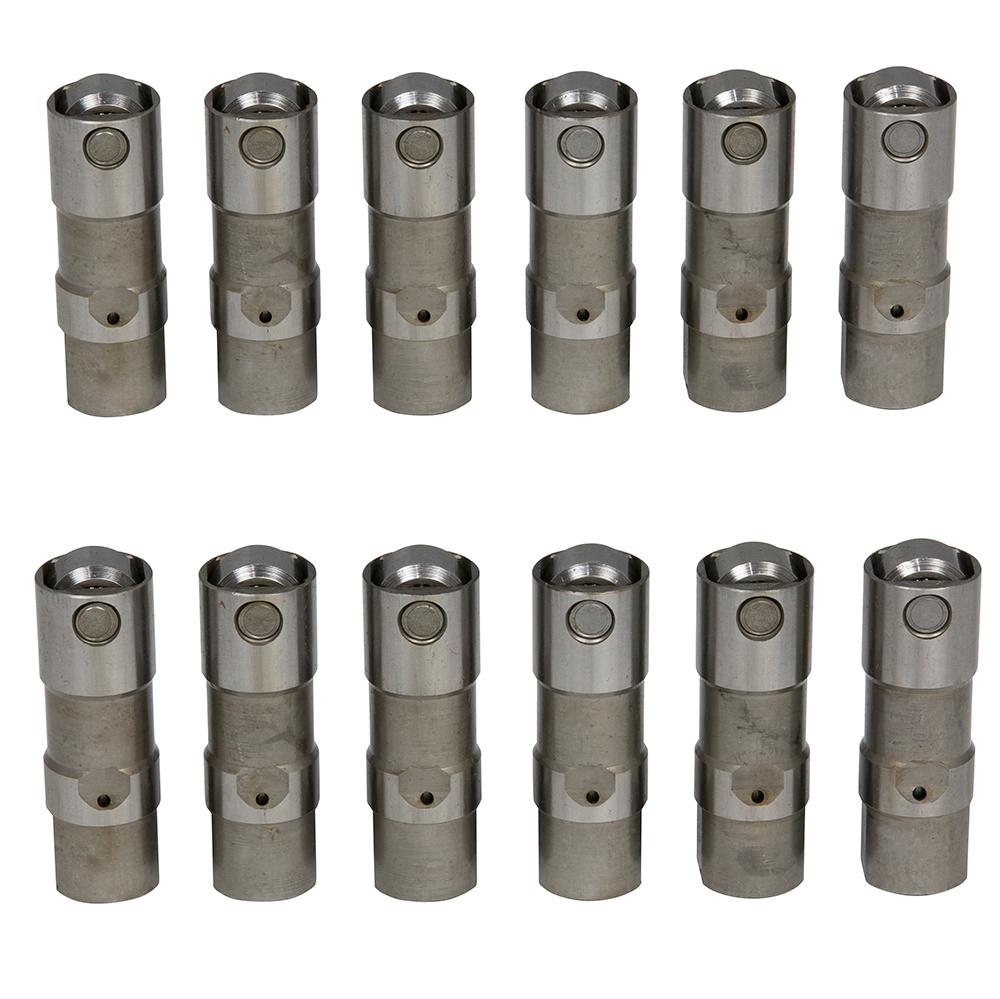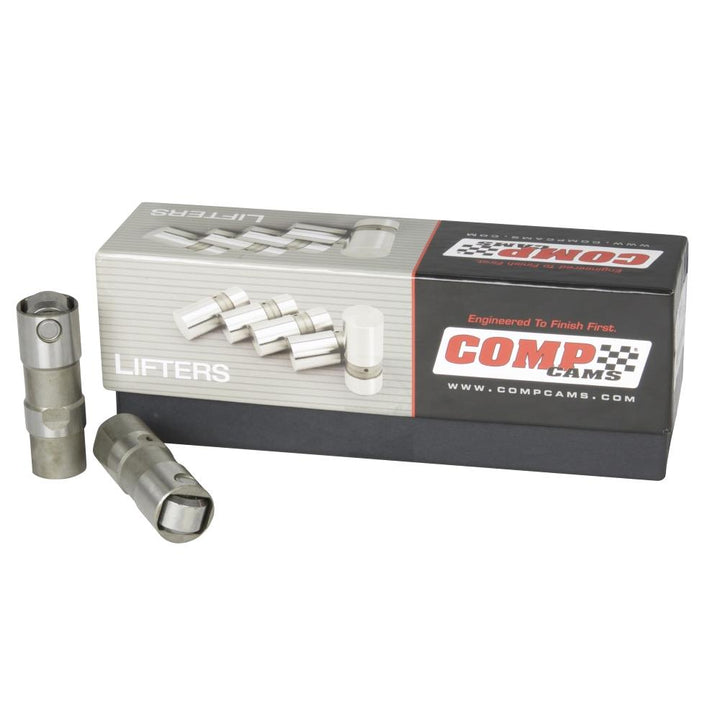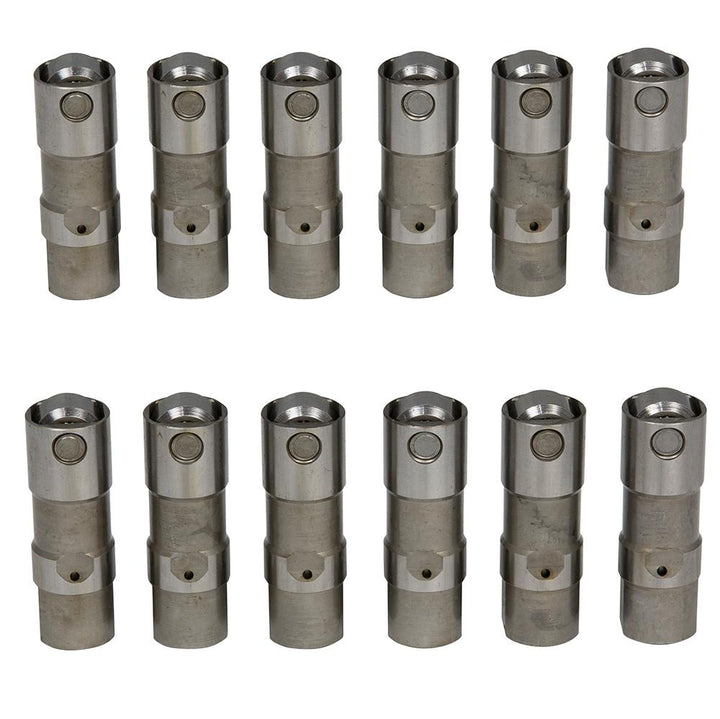Comp Cams Hydraulic Roller Lifters are an upgrade for factory lifters in the Series 2 & 3 3800.
Sold in a set of 12.
How to determine proper push rod length by measuring "lifter preload":
All said and done you need to add up the changes in head milling, block decking, head gasket thickness, push rod length, valve tip height, camshaft base circle lobe diameter, and rocker arm type. This will allow you to calculate the length of push rod needed.
To check for lifter preload or lifter squish you need to first get to zero lash. Turn the engine over so that one valve on a cylinder is open. Because one is open, you know the other is closed, meaning the lifter is sitting on the base circle. With that lifter on the base circle loosen the rocker bolt and then retighten with one hand while spinning the pushrod with the other. This way you can tell when everything first makes contact (the valve is touching the rocker tip, the pushrod is touching the rocker & and lifter and the lifter is touching the cam). At this point of first contact you are at zero lash. Everything past this point is lifter preload. Continue to tighten the rocker bolt until the bolt hits its snug point. This is how much lifter preload you have. Each 1/2 turn of the rocker bolt is ~.050 of lifter preload. Your goal is to have between 1/2 turn and 1.5 turns if you have stock lifters or 3/8 turn to 1/2 turn if you have Comp or LS7 lifters. As you can see the stockers have a lot more room for error.
If you have too much preload and you have exhausted the adjustment of the lifter, the valves will stay open and the car will not start due to lack of compression. If you have too little preload, the valve train will be noisy and you risk exploding a lifter and having a very costly repair.





